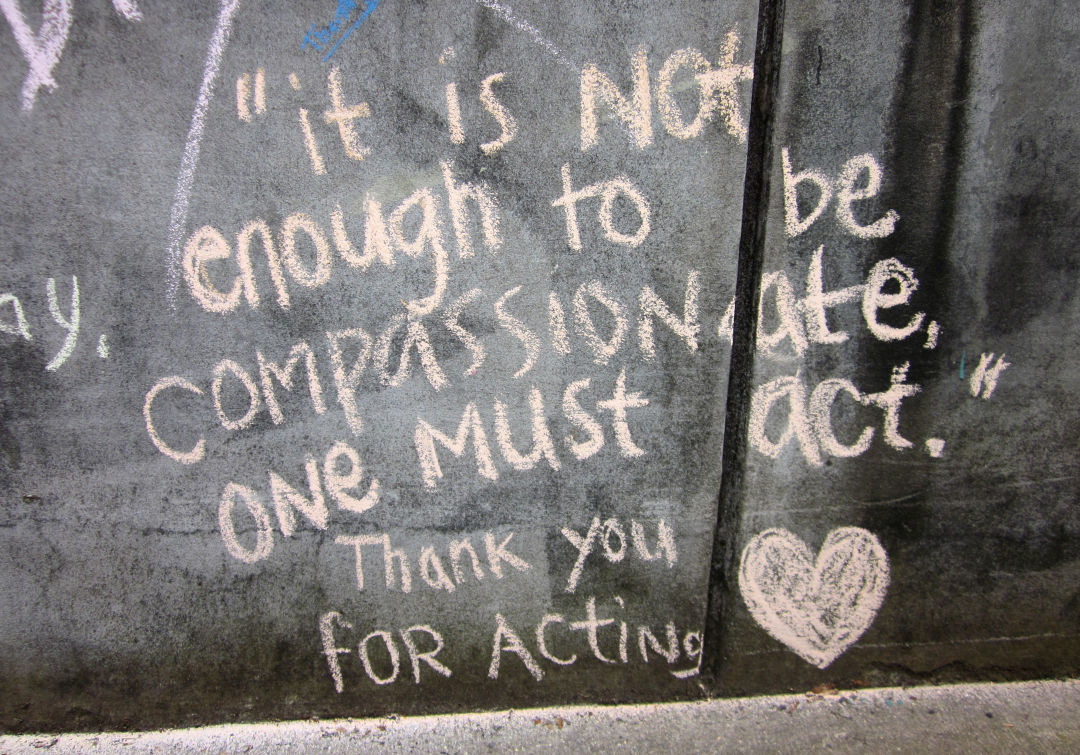How Should We Commemorate Portland's Fatal MAX Attack?

Image: Margaret Seiler
Does street art have the power to help a community grieve and heal?
On May 26, 2017, a knife-wielding white nationalist killed two men and critically injured another when they came to the defense of two young women of color, one wearing a hijab, on a MAX train at Northeast Portland’s Hollywood Transit Center. The city’s emotional outpouring in the wake of the tragedy resulted in a spontaneous mural of chalk drawings and messages at the stop, the word “love” a constant refrain. During a vigil, flower bouquets festooned the walls; strangers hugged one another on the street. A year later, TriMet wants to preserve that spirit in art.
The transit agency has had plans since before the attack to completely remake the stop in the coming years. But in the meantime, it has chosen Egyptian American artist Sarah Farahat to temporarily transform 2,000 square feet of wall space into a vibrant spectrum of colors. Though her design is not yet finalized, Farahat’s proposed mural would feature a winding western peony (a flower traditionally used in grief medicine) and an excerpt from Palestinian poet Mahmoud Darwish’s work painted in eight different languages (Arabic, Chinook, Somali, Chinese, Russian, Spanish, Vietnamese, and English) across the depot’s 23 panels facing NE Halsey Street.
“There’s an idea of transformation,” says Farahat. “You have day turning into night as you go throughout the mural. There’s sort of the life cycle of the plant growing and the language shifting. We don’t take enough time to grieve.”
Farahat collaborated with artist Jamaali Roberts on parts of the design, which includes illustrated train cars punctuated with Hamsa hands, a Middle Eastern symbol of protection, to guard commuters.
“In spaces where violence has occurred in the past, street art can be a powerful way to provide the community a symbolic place to heal,” says Tiffany Conklin, a founding director of the Portland Street Art Alliance, pointing to the West Bank Wall between Israel and Palestine, protesters’ graffiti in Cairo during the overthrow of Hosni Mubarak in 2011, and countless Black Lives Matter murals.
A more permanent commemorative plaque, designed by John Laursen of Press-22, briefly tells the story of what happened and displays full-color images of the original, spontaneous memorial screen-printed onto porcelain enamel on steel.
“We want to make sure that no one forgets,” says Michelle Traver, TriMet’s public art administrator. “Two people didn’t just die. They were standing up for other people, and that touched many lives.”




